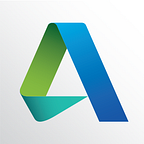For Tomorrow’s Generation, Code is Cool but CAD is Rad
By: Sarah O’Rourke
As I head to Denver for the ISTE 2016 education and technology conference to hear about educators’ best practices for incorporating science, technology, engineering and math (STEM) into the classroom, I can’t help but reflect on my own experiences encouraging my daughters to explore these fields. Last December my daughter’s school took part in the Hour of Code hosted annually by Code.org, and I was excited to see her school taking part in trending education topics and exposing the entire school community to a new way of thinking about STEM education and computer science.
We watched a video with President Obama high-fiving a girl taking one of the courses, then various celebrities and tech leaders chiming in with the importance of supporting this movement. I was ready to get started and have fun too.
My daughter had already zeroed in on Code.org’s “Frozen” course, introducing her to basic coding concepts like loops and conditionals. She got started quickly and had success with making Elsa and Anna spin across her screen, complete with magical snowflakes.
As she began to move onto the next module, I thought, “So, what’s next?” I know the benefits of learning to code are valuable, because it helps coders potentially become the makers or creators of the next Facebook, Instagram or Snapchat. But how else can we encourage tomorrow’s designers and entrepreneurs to dive into STEM fields? Let me introduce you to my rad friend CAD.
CAD stands for computer aided design. It allows people to imagine, design and create things virtually and then make them. Companies like Autodesk have been around for decades helping buildings, highways, cars, clothes, movies and more, move from your screen into the real world.
K-12 education is in the process of changing, with new focus on coding, the maker movement and easy access to 3D printers. While code is the popular kid on the block right now, CAD is the cool kid in the back of the classroom that is wicked smart and able to make anything happen.
Kids, teachers and parents are gravitating toward project based learning for a reason: it offers an opportunity to collaborate, communicate, create and critically think about the problems they are trying to solve; our friend CAD is the one that can make it all happen.
One of the easiest 3D design tools, Tinkercad, allows anyone to think of something in their mind or sketch on paper and create it in a matter of minutes. A few weeks later after the Hour of Code, I went back into my daughter’s class with a 3D printer and asked them a simple question: What is something that is broken in your classroom? They shouted out various answers — coat hook, table, drawer knob, my brother, pencil, my head. Thankfully we settled on coat hook. We talked about how it broke, its function and how they would make it better. Our friend CAD brought together this group of kids to collaborate and solve a problem.
We logged into Tinkercad and created a simple hook and then 3D printed it — all in a matter of 60 minutes. The same amount of time that we spent with the Hour of Code we spent solving a problem that affected these very students.
My goal is not to challenge if code or CAD is more important because both add value to any student’s skillset. Instead, what we need to think about is how these tools can solve real problems. In my perfect world, code and CAD should become best friends to help the next generation change the world around them.
Sarah O’Rourke is a youth marketing manager at Autodesk. Find her at ISTE 2016, where Tinkercad was awarded the ISTE Seal of Alignment for Student Readiness.
